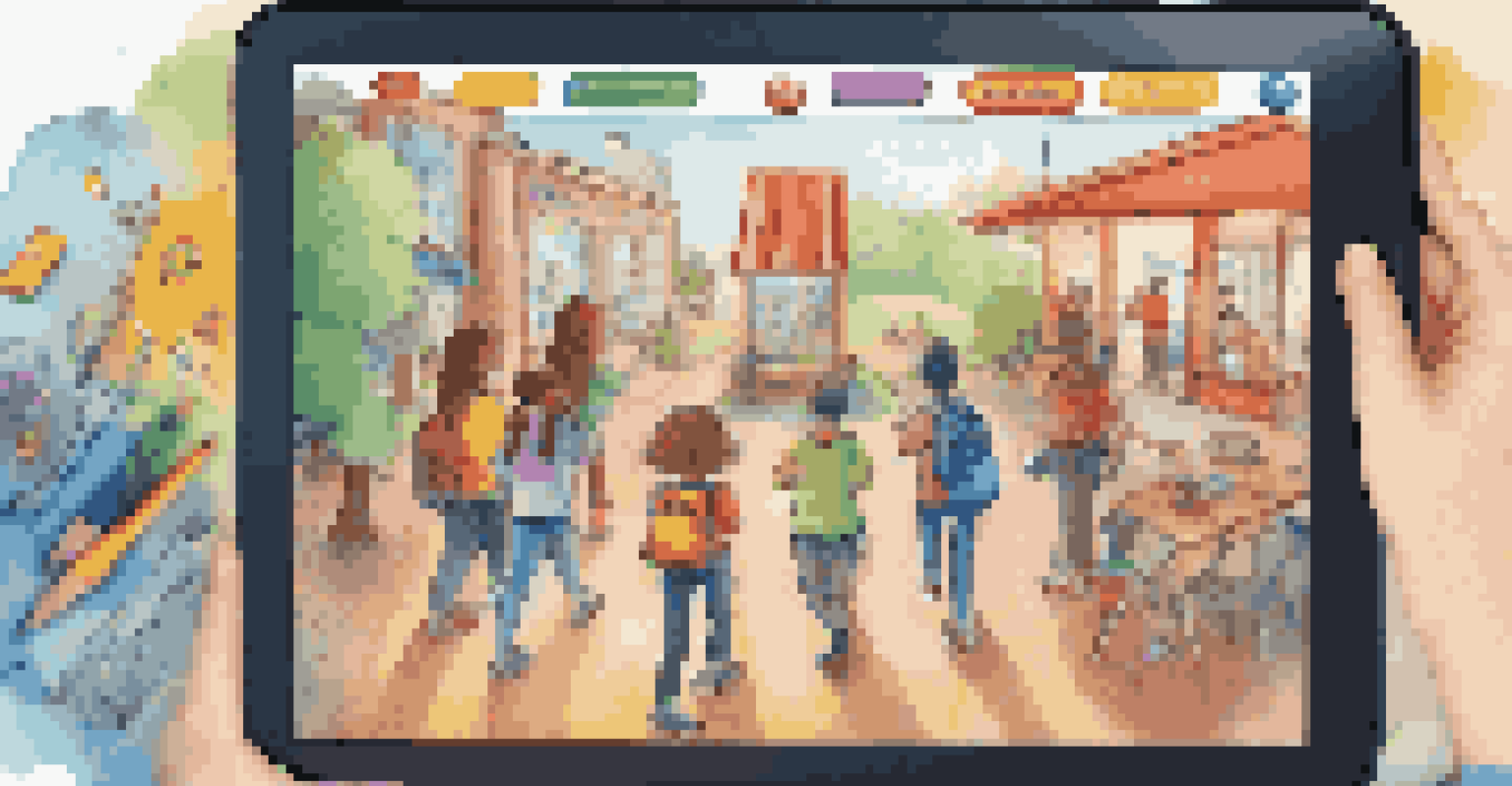Creating Inclusive Gamified Learning Experiences for All

Understanding Gamified Learning and Its Benefits
Gamified learning combines game elements with educational content, making the learning process engaging and interactive. Think of it as turning a traditional classroom into a vibrant game board where students earn rewards for their achievements. This method not only boosts motivation but also enhances retention by making complex concepts easier to grasp.
Games give you a chance to excel in areas you didn't think you could.
Incorporating gamification can transform mundane subjects into exciting challenges, appealing to various learning styles. For instance, visual learners might benefit from interactive simulations, while kinesthetic learners thrive in hands-on activities. By tapping into these diverse preferences, educators can create a dynamic environment that fosters inclusivity.
Moreover, gamified learning encourages healthy competition and collaboration among learners. Participants can work together to achieve common goals or compete in friendly contests, which enhances social skills and builds a sense of community. This sense of belonging is crucial for creating an inclusive atmosphere.
Identifying Diverse Learner Needs
To create inclusive gamified experiences, it's essential to recognize the diverse needs of all learners. Each student comes from a unique background, with different abilities, learning styles, and interests. By understanding these differences, educators can tailor their gamified approaches to ensure everyone feels valued and included.

For example, consider a classroom with students who have varying levels of proficiency in a subject. By offering different difficulty levels in games, educators can cater to both advanced learners and those who need additional support. This flexibility helps avoid frustration for some and boredom for others, promoting a balanced learning experience.
Gamification Boosts Engagement
Gamified learning transforms traditional education into an exciting and interactive experience, enhancing motivation and retention.
Additionally, incorporating feedback mechanisms allows learners to express their needs and preferences. This ongoing dialogue can help educators adjust their strategies, ensuring that all students feel engaged and empowered throughout the learning journey.
Designing Accessible Gamified Activities
Accessibility is a cornerstone of inclusive design. When creating gamified activities, consider various accessibility features that ensure all learners can participate fully. This might include options for screen readers, adjustable text sizes, and color contrasts for those with visual impairments.
In learning, you will teach, and in teaching, you will learn.
Moreover, providing alternative ways to engage with content is crucial. For instance, if a game requires reading, consider adding audio narration or video explanations for auditory learners or those with reading difficulties. These accommodations help bridge gaps and foster a more inclusive gaming experience.
Finally, it's important to gather feedback from learners about the accessibility of your gamified activities. By encouraging open communication, you can make continuous improvements, ensuring that your educational games are welcoming to everyone.
Encouraging Collaboration Through Team-Based Games
Team-based games can be a fantastic way to promote inclusivity in gamified learning. By encouraging collaboration, students learn to appreciate each other's strengths and help each other overcome challenges. This cooperative spirit not only enhances learning but also fosters friendships and social skills.
Consider implementing group challenges where students must work together to solve problems or complete tasks. This can range from trivia competitions to escape room scenarios that require critical thinking and teamwork. By working together, students can leverage their diverse skills, creating a richer learning experience.
Inclusive Design is Essential
Recognizing and accommodating diverse learner needs ensures that gamified experiences are accessible and engaging for everyone.
Moreover, team dynamics can help students build confidence. When learners support one another, they are more likely to take risks and express their ideas without fear of judgment. This supportive environment is essential for nurturing an inclusive culture in any learning setting.
Utilizing Technology to Enhance Inclusion
Technology plays a significant role in creating inclusive gamified learning experiences. Tools such as online learning platforms and mobile apps can provide personalized learning paths tailored to individual needs. This adaptability is crucial for accommodating diverse learners effectively.
For instance, using platforms that allow for real-time feedback can help educators adjust their teaching strategies on the fly. If students struggle with a concept, technology can provide instant resources or alternative challenges to reinforce understanding. This responsiveness keeps learners engaged and motivated.
Additionally, technology can bridge geographical gaps, allowing students from different backgrounds or locations to participate in gamified learning. Virtual classrooms and online games create opportunities for collaboration and interaction, enriching the learning experience for everyone involved.
Incorporating Cultural Diversity in Gamified Learning
Cultural diversity is a vital aspect of inclusivity in education. When designing gamified learning experiences, it's important to incorporate elements that reflect the diverse backgrounds of learners. This could be through themes, characters, or scenarios that resonate with different cultures and experiences.
For example, games that showcase various cultural traditions or historical events can spark interest and promote understanding among students. By engaging with content that reflects their own backgrounds, learners are more likely to feel connected and invested in the material.
Collaboration Enhances Learning
Team-based games foster collaboration and social skills, allowing students to leverage each other's strengths in a supportive environment.
Furthermore, involving students in the development of these games can enhance cultural relevance. Encouraging them to share their stories and perspectives allows for a richer, more diverse learning experience that benefits everyone in the class.
Measuring Success in Gamified Learning Environments
To ensure that your inclusive gamified learning experiences are effective, measuring success is essential. This can be achieved through a combination of qualitative and quantitative assessments. Surveys, feedback forms, and observation can provide valuable insights into how well the activities are meeting learners' needs.
Additionally, tracking engagement levels, progression rates, and overall satisfaction can help identify areas for improvement. If certain games aren't resonating with students, it's crucial to understand why so you can adjust your approach accordingly. Continuous evaluation fosters a culture of growth and responsiveness.

Remember, success isn't just about academic performance; it's also about the social and emotional impact of the learning experience. An inclusive gamified environment should empower learners, boost their confidence, and foster a sense of belonging, all of which are indicators of a successful program.